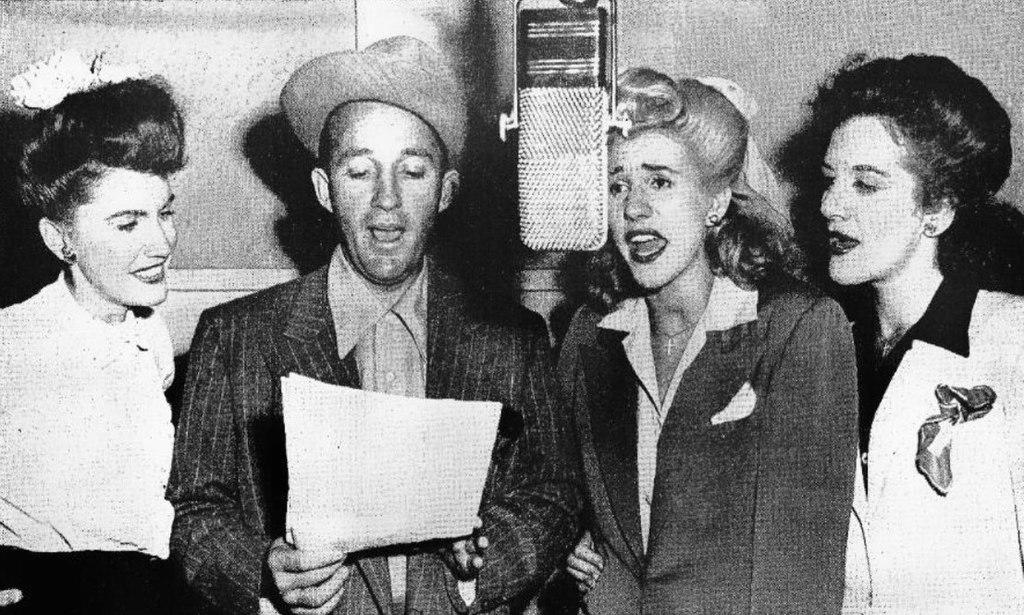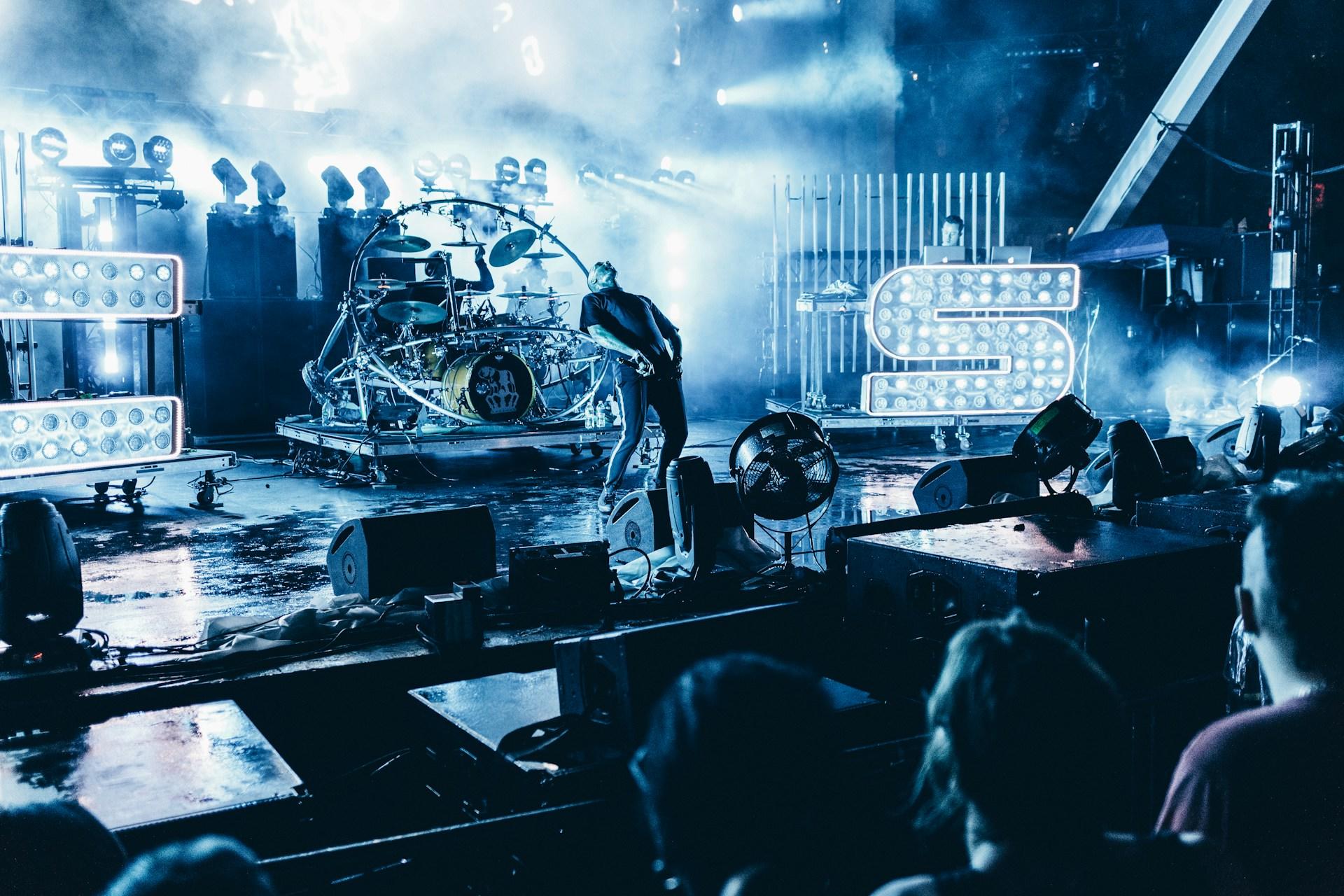Contrary to popular perception, there isn't a single sound that characterizes pop singing. Instead, a range of vocal styles is used, from soft, quiet, breathy notes to loud, full-bodied belting, from au natural sounds to heavily modified voices, and everything in between.
Since pop singing is such a versatile style, how is it different from other styles of singing, like R&B, rock, or country?
Find out more about different types of singing styles and how to tweak your own singing voice to convey “pop” to your listeners.

What Is Pop Music?
Before we get into the differences between pop music and other types of music, we need to know what pop music really is. It’s a little nebulous and complicated, but there are some key characteristics of music that makes it pop.
What is the pop music definition? It’s impossible to come up with a one-size-fits-all description. Simply put, pop music is what is popular at a given moment. It’s a vague definition because what people think is popular can and does change all the time.
What’s more important to focus on are the commonalities between pop songs in relation to the audience evaluating them. Pop music has a few distinctions that set it apart from other styles. Here are some of the most common characteristics that make a pop song a pop song.
The “pop” in “Pop music” stands for “popular.” Therefore, pop music is largely defined by the will of the people, so many different sounds through the ages have been considered pop.
Appeals to a Wide Audience
The style of pop in any given time period reflects the sounds, lyrics, and stylings that are considered relatable to the general population at that time. That’s why pop from 50 years ago sounds a lot different from pop today, yet both are still considered to be pop.
The broad range of influences also enables pop music to overcome national and cultural barriers, making it possible for the same song to be popular simultaneously in different US cities, as well as internationally.
Focuses on Social Themes
Pop music typically involves relatable, lighter social themes and issues so that a larger audience may enjoy the songs. The message that pop music is intended to convey to its listeners distinguishes it from many other genres.
By and large, pop music is meant to make people feel relatable human emotions like joy or heartache.
Sometimes Inspired by Other Musical Influences
When it comes to pop music, you may hear styles of pop music being influenced by Latin, rock, country, dance, and urban genres, just to name a few.
Pop musicians sometimes take existing music and incorporate it into new tracks. A popular example is Chopin's "Prelude in C Minor," which inspired Barry Manilow's song "Could It Be Magic."
There are many different types of pop, and it depends on who you ask how many categories there are. In general, the most common types of pop music are indie pop, folk pop, country pop, pop rock, dance-pop, bubblegum pop, electropop, and instrumental pop music.
Great for Singing Along
A unique voice is more important than instruments in mainstream music when singing a pop-style song. Successful pop singers leverage their unique voices to create a stand-out sound in a sea of pop music. The lyrics and singing style with complementary music are key. People must love singing along.
Suitable for Dancing
Pop music is enjoyable for the body as much as the ears. Pop songs make people get up and dance because of their groovy beats. While not every pop song is a good dancing song, most pop songs are. And the dances are typically freeform, or have a fun sequence that unites people with the power of movement (like "HOT TO GO!”, for example).
A Brief History of Pop Music
Now that you know more about the characteristics of pop music, let’s explore its history and look at real-life examples.
When Was Pop Music Invented?
Pop music emerged in the 1950s in the US and UK. The stage for it was set in the 20s with the advent of widespread use of radios in homes and businesses. For the first time, people could listen to music along with others in different locations in real-time. Before then, music was either heard live or with a device like a gramophone.
After WWII, an economic boom in the US and UK meant that people, specifically teens, suddenly had more disposable income. They ended up spending a lot of that money on vinyl records. Although records had been around since the 20s, they suddenly became a lot more, well, popular!
And that meant that now, masses of youths were sharing opinions on musical styles and congregating to similar sounds they liked, defining pop at a level that could be recognized with sales statistics. Thus, the genre was formed.

Famous Pop Singers in Pop Music History
The easiest way to learn about pop music is to think about the top pop songs through the ages and identify what made them popular for their time periods. Then, you can more easily understand the pattern that makes the contemporary pop music genre work.
Early Popular Pop Artists (1950s-early 1960s)
In the 1950s, pop was born. The masses were discovering music styles and singers they liked most and influenced how those singers and new singers approached music making.
You’ll notice that the popular sound of those days is quite different than what we consider pop today!
Some of the most popular pop songs from that time were:
- “Goodnight Irene” by Gordon Jenkins & The Weavers
- “Too Young” by Nat King Cole with Les Baxter
- “Blue Tango” by Leroy Anderson
- “The Song from Moulin Rouge” by Percy Faith featuring Felicia Sanders
- “Don’t Be Cruel” (and many other songs) by Elvis Presley
- “Surfin’ U.S.A.” by The Beach Boys
The singing style of these songs is typically described as “crooning,” in the case of the sentimental songs, and “bluesy, nasal, embellished” for the more upbeat, rock songs.
This style has had a brief resurgence in the modern day with the popularity of clips of the song “Put Your Head on My Shoulder” by Paul Anka (1959) and “I Don’t Want to Set the World on Fire” by The Ink Spots (1941). These two songs in particular have been mixed and covered many times by modern artists, repurposing the song into modern-day pop!

The British Invasion (mid-1960s)
How pop music influenced society took a hard turn in this era as pop music and celebrity culture became extremely pervasive in everyday life. The vibe of pop transformed to include more risqué themes and lyrics as rock and roll entered the pop-o-sphere.
Here are some of the most notable pop music artists from this time.
- “I Want to Hold Your Hand” by The Beatles
- “I Can’t Get No Satisfaction” by The Rolling Stones
- “California Dreamin’” by The Mamas & the Papas
- “I’m A Believer” by The Monkees
- “(Sittin' On) The Dock of the Bay" by Otis Redding
Of course, not every single pop song at this time was from the UK, but it was when the US started being much more interested in pop culture from across the pond.
Many pop singing styles at this time were more “raw,” with more raspy-sounding vocals rather than the smooth stylings of the 50s.
The Rise of Disco (1970s-early 1990s)
Again, there is obviously more than just disco in the discography of 70s and 80s music, but before this time, that sound was hardly found in mainstream music at all.
Many pop music songs from this time had a lot in common with music from the 50s-60s; if there’s one thing to take away from all this, it’s that pop music morphs slowly and grows larger all the time, encompassing more sounds each time music evolves.
Some of the newer styled songs from this time include:
- “Ain’t No Mountain High Enough” by Diana Ross
- “Joy to the World” by Three Dog Night
- “Crocodile Rock” by Elton John
- Anything by The Jackson 5 and Michael Jackson
- Fame” by David Bowie
- “Bohemian Rhapsody” by Queen
- “Call Me” by Blondie
As you can see, the genre has definitely grown. It’s impossible to list all the songs that define the sound of that era because there were so many different sounds in pop!
Some varieties favored vocals that were more aligned with rock, and others like Michael Jackson came up with a new sound designed to sit firmly within pop.

The Start of Modern Pop Culture (mid 1990s-2000s)
This era saw the rise of grunge and boybands, two polar opposite sounds both sitting under one pop roof, along with many other stylings, too.
Some of the hit artists (and their sounds) from this era were:
- Mariah Carey
- TLC
- Bryan Adams
- Boyz II Men
- Spice Girls
- Madonna
- Savage Garden
- Shania Twain
- Jewel
- Backstreet Boys
- Notorious B.I.G.
- Goo Goo Dolls
- Kelly Clarkson
- Black Eyed Peas
- Lady Gaga
And many, many, many more.
Pop was full of interesting voices coming from all sorts of musical backgrounds: rap, R&B, folk, country, rock, disco, pure pop, and more.
Some of best top songs in 2024 so far are “Espresso” by Sabrina Carpenter, “HOT TO GO!” by Chappell Roan, and “Beautiful Things” by Benson Boone. They highlight the current trends in pop music: feel-good lyrics, upbeat mood, interesting vocals, and an overall treat for the ears.
Modern Pop Now (2010s-Present)
This era saw an uptick in vocal stylings like autotune and an increase in songs about things like partying, though, of course, all the previous pop iterations were still present as well!
Iconic voices from this time include
- Ke$ha
- Katy Perry
- Taio Cruz
- Jason Derulo
- Beyoncé
- Rihanna
- Adele
- Bruno Mars
- Carly Rae Jepsen
- Miley Cyrus
- The Weeknd
- Taylor Swift
- Dua Lipa
- Sam Smith
- Sabrina Carpenter
- Harry Styles
- Post Malone
The vocal stylings found in pop music vary greatly, but the most successful pop songs share all the characteristics previously mentioned.
All sorts of kinds of pop music have been popular through the ages, and we are in the middle of it evolving even more right this minute.
When you look at popular songs 2024, you can see how music has already shifted from the 2010s.

What Makes Pop Music Pop
So what is it about pop music that sets it apart from other genres? What makes a song pop? While it’s true that there are more varieties of pop music and pop singing styles than can be neatly outlined in a simple article, in general, there are a few key characteristics of pop singing that make it different from other genres.
Let’s compare key features of a few different singing styles to see how pop singing stands out by modern-day standards.
Key Features of Pop Singing
Pop singers in the more “pure pop” categories tend to have a few things in common.
Most pop singers use vocal tones that are more breathy, bright, on the higher end of the scale, utilize more head voice than chest voice, and use modest vibrato.
These techniques combined with interesting, easy-to-understand, memorable lyrics and catchy supporting music are a good recipe for a pop song. Many pop singers these days also use a lot of affectation in their voices to make the lyrics more interesting (think Halsey).
These qualities make the songs easier and fun for the general masses to sing along.
Even in the “alt-pop” categories, you’ll notice that the songs from the alt genre that most resemble pop are typically the songs that become popular.
Key Features of Classical Singing
By contrast, one of the easiest singing styles to compare with pop is classical because they are so different. Classical singing utilizes a heavy amount of chest voice and vibrato with extreme vocal ranges, making it incredibly difficult for the average person to sing. Combined with non-catchy lyrics (often in another language) that are hard to understand and equally non-catchy music, it’s easy to see why classical is not pop.

Key Features of Rock Singing
Rock singers tend to use lower notes and rough-sounding vocals, like growls or heavy vocal fry. This makes it harder for others to sing along. The subject matter can often be much darker with lyrics to match.
Key Features of Country Singing
“True” country music uses more twang in the vocal stylings, less catchy lyrics and music, and the subject matter is usually about country living. However, it’s easy for country and pop to combine because both can be really upbeat and leverage interesting tunes.
Key Features of Jazz Singing
Jazz is another style that is a great contrast to pop. Jazz often uses improvisation like scat that makes it much harder for others to sing. Combined with long stretches of instrumentation, it simply doesn’t fit the mold for a pop record.
Styles of Pop Music
There are many different types of pop music that use different music and vocal styles, but are all part of the pop family.
The most common pop music types are:
- Classic pop
- Indie pop
- Country pop
- Pop rock
- Alt pop
- Dance-pop
- Pop punk
- Rock and Roll
- Bubblegum pop
Other, lesser-known pop styles (which are interesting because they are not popular to the general public but popular to certain musical enthusiasts) feature different styles of singing and instrumentation.
These different types of pop include:
- City pop
- Electropop
- Bedroom pop
- Operatic pop
- Ambient pop
- Baroque pop
- Emo pop
- Pop soul (motown)
- Psychedelic pop
- Street pop
- Hyperpop
These styles of singing leave room for a pop music artist to experiment with a different vocal style and explore unique pop categories if they don’t want to be in the mainstream pop world.
Master Your Pop Singing Skills with Superprof
Pop vocal technique is sometimes viewed as a single ability that is easy to master. The key to proficient pop singing is to keep the words as near to regular speech tune as possible. If you're based in Los Angeles, consider exploring singing lessons los angeles to refine your style.
If you want to polish your pop singing skills and learn how to make music, head to Superprof. With personalized online singing lessons from Superprof, you can learn singing in the Pop style, regardless of your voice type and range. Residents of Austin can also enhance their abilities with singing lessons austin.
If you're located in San Diego, consider singing lessons san diego for personalized local guidance.
The singing lessons near me at Superprof help novice singers go through the early stages of vocal growth. These tutors will help you master different singing styles in no time.
For personalized instruction in Chicago, check out singing lessons near me to elevate your performance.















